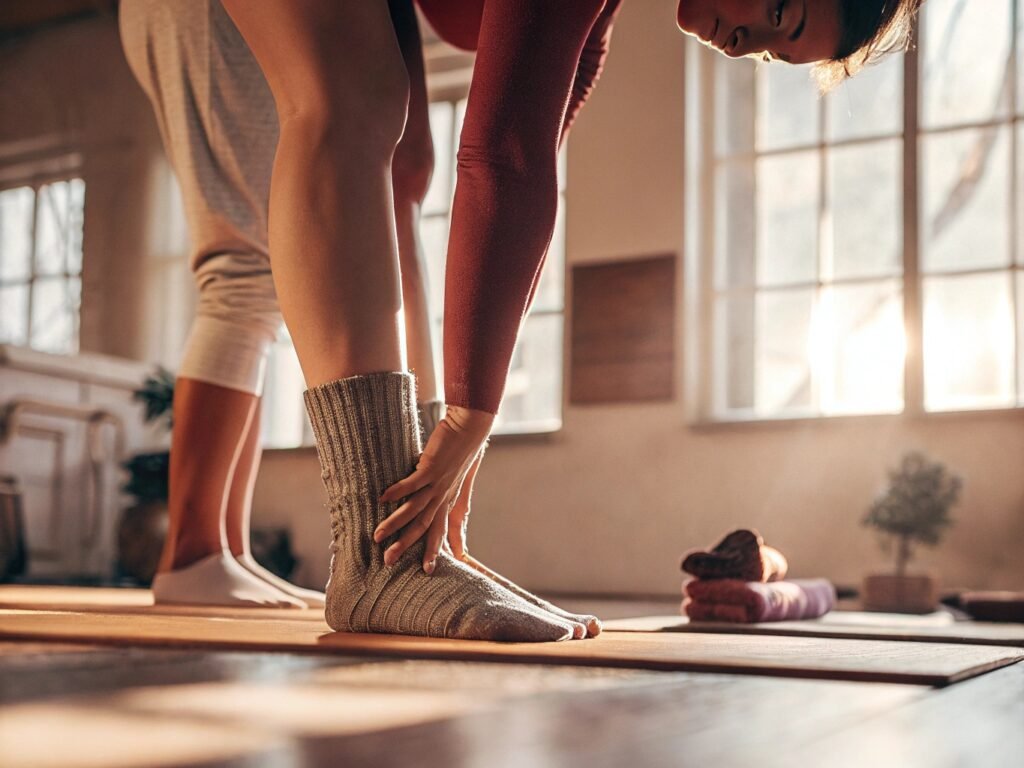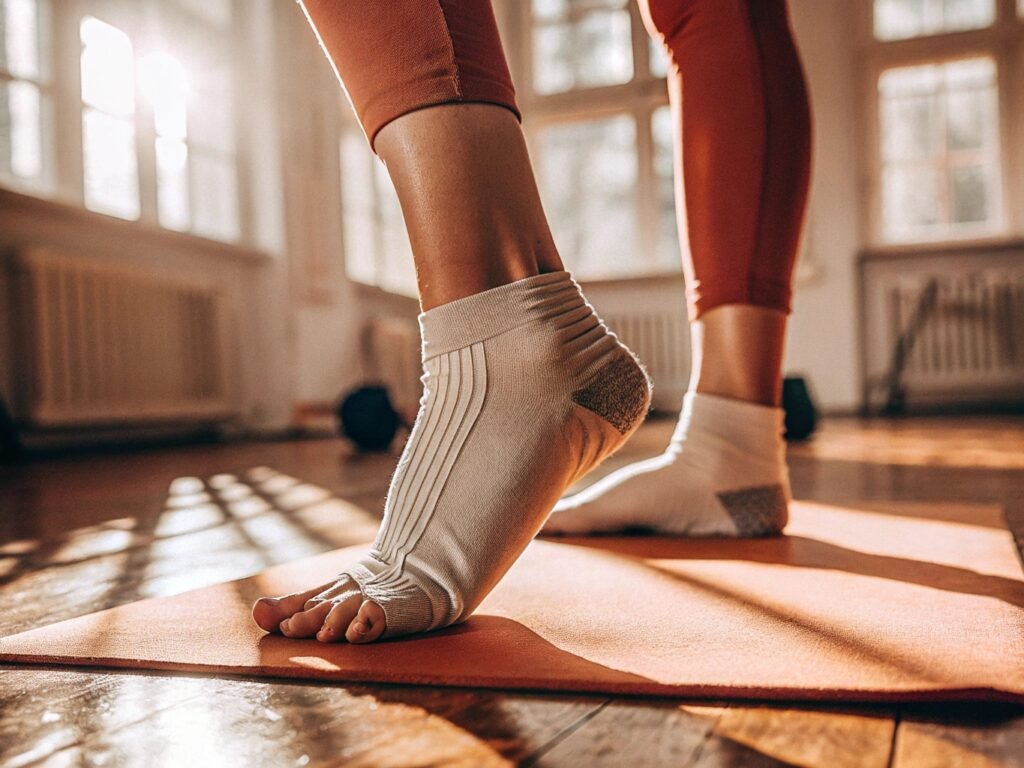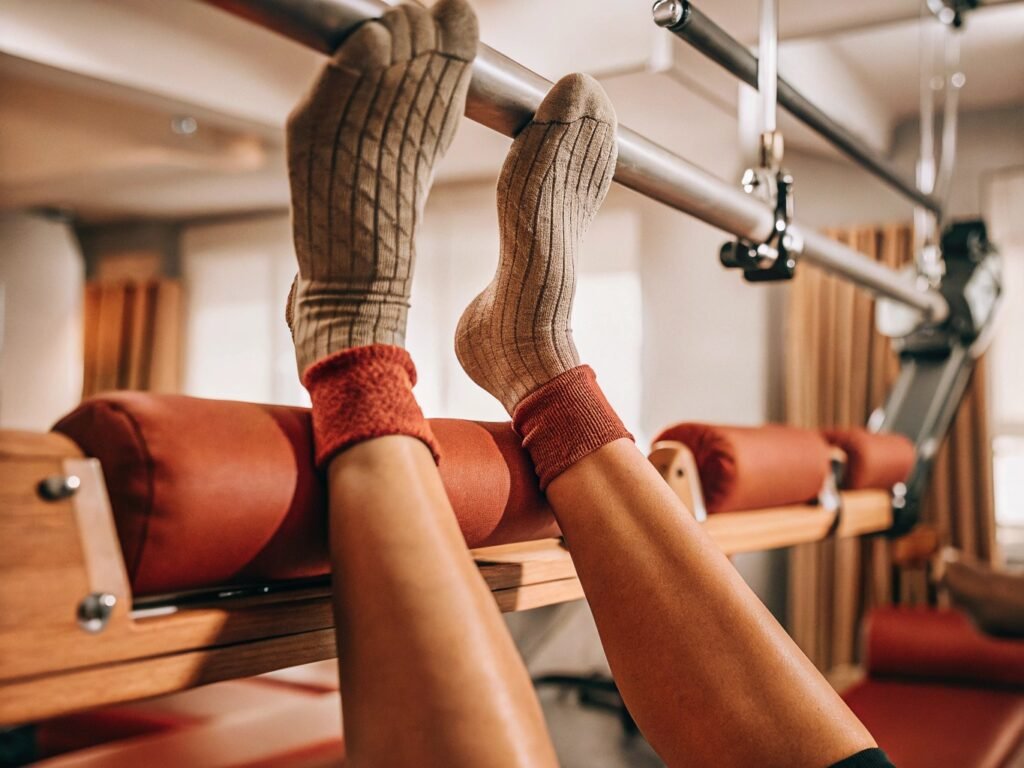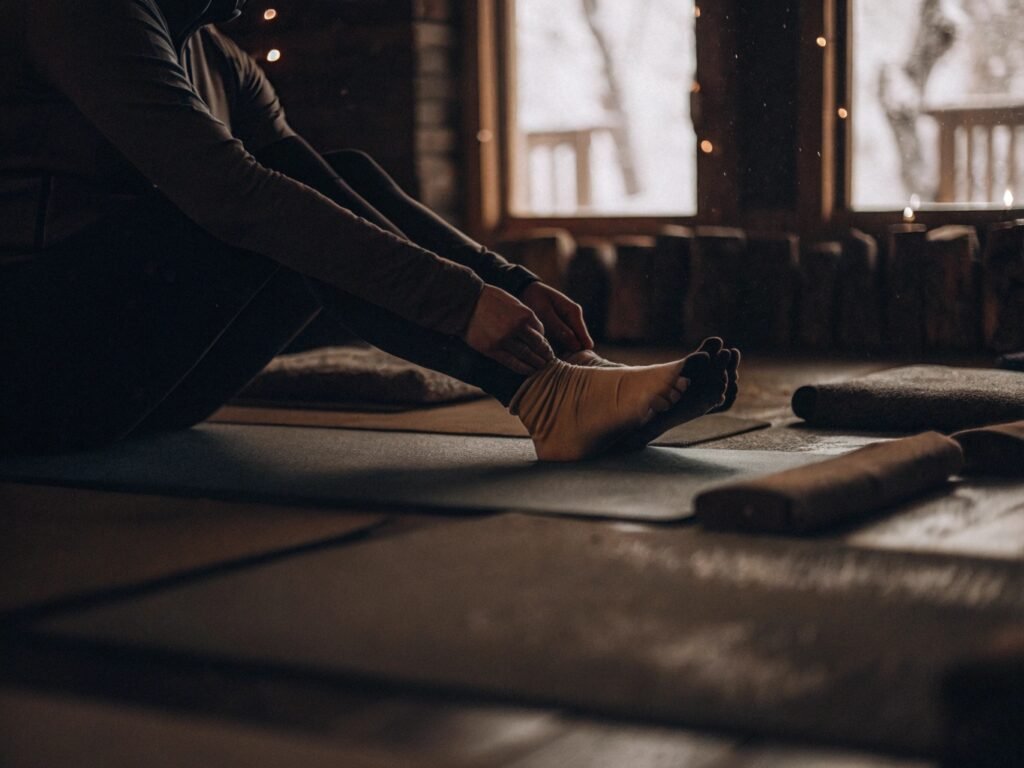Yoga mats get slippery, especially in a heated class or sweaty vinyasa flow. Losing balance for even a second can take you out of your rhythm and make practice frustrating.
Yoga enthusiasts prefer grip socks because they prevent slipping, help maintain balance in challenging poses, and allow for a more focused, relaxed practice by reducing anxiety over falls and foot movement.

At first, I thought practicing barefoot was the most natural way, but one near-slip changed my mind. Having secure feet, especially during twisting or balancing poses, let me concentrate on breath and movement instead of worrying about falling. Here’s why grip socks are becoming many yogis’ favorite accessory, and why I never hit the studio without a pair.
Should You Wear Grippy Socks to Yoga?
Many studios don't require socks, but students notice people showing up with cozy, non-slip pairs. So, do you really need them to get more out of your practice?
Yes, wearing grippy socks to yoga is helpful. They stop your feet from sliding on mats, protect against germs, and give better traction during sweaty or advanced poses.

After trying them myself, I noticed more control as soon as I started my first downward dog. When the mat got sweaty in hot vinyasa, the silicone grips kept me from skidding forward. They also added a thin layer of comfort that took away the chill from the floor in winter classes. Some people prefer the barefoot feeling, but if you ever lose footing—even once—grip socks instantly make a difference, especially for balancing, arm balances, and side planks. They're also great for hygiene, particularly in packed or shared studio spaces.
| Grippy Socks Benefit | Barefoot | With Grip Socks |
|---|---|---|
| Slippage on mat | High | Minimal |
| Toe protection | None | Protected from germs |
| Stability in poses | Varies | Noticeably improved |
| Hygiene | Depends | Higher |
Why Do People Like Grippy Socks?
You’ll notice seasoned yogis and even some beginners pulling on colorful grip socks before class. What makes them more than just a trend?
People like grippy socks because they offer better traction, warmth, and cleaners—improving comfort, confidence, and safety in a sweaty studio environment.
 "rainbow yoga grip socks")
"rainbow yoga grip socks")
For me, grippy socks stopped my feet from sliding and let me relax into deeper stretches. The small silicone dots on the soles stick just enough, so twists and balances feel secure, even if the mat surface gets wet. For those who don't love being barefoot, grippy socks are a clean barrier. Many also say the gentle compression and soft fabric make them more comfortable for longer classes. Some yogis choose them for the cozy feel, especially on chilly floors, while others love the vibrant colors and fun patterns as a personal expression in the studio. All these little benefits add up to one big thing: grip socks make it easier to focus fully on the poses and breath, not your feet.
| Reason People Choose | Benefit in Class | Emotional Benefit |
|---|---|---|
| Extra grip | No slipping | Feels safer |
| Cleanliness | Barrier to germs | Less worry |
| Style choices | Colors and patterns | More confidence |
| Warmth | Comfort in winter | Cozier atmosphere |
Can I Do Pilates Without Grippy Socks?
Most yoga studios are relaxed about footwear, but Pilates classes often look different—almost everyone wears socks with dots on the bottom.
Yes, you can do Pilates without grippy socks, but using them provides better traction, which is important for safety and confidence, especially in reformer classes.

I’ve tried mat Pilates1 both ways. Going barefoot works2 fine if you’re on a clean, dry mat and the exercises are light. Once you try advanced routines or work on studio equipment like the reformer or barre, grippy socks make a bigger difference. The machine surfaces can be slippery—even more so if your feet sweat. Most Pilates studios recommend socks for hygiene3, and many actually require them, especially for group lessons. I always feel more at ease, able to press my feet fully into movements, when grippy socks keep me anchored. Even with the mat, the added grip lets you focus on form instead of worrying about falling or sliding.
| Class Type | Barefoot OK? | Grippy Socks Advised? | Studio Requirement |
|---|---|---|---|
| Yoga (mat) | Yes | Optional | Rarely |
| Pilates (mat) | Yes | Yes | Sometimes |
| Pilates (reformer) | Rarely | Yes | Often required |
Why Do People Like Grippy Socks?
It's not just about falling or sliding. There are small things about grip socks that make the whole yoga or Pilates ritual a little better.
People appreciate grippy socks for small comforts—warm toes in winter, clean feet at the studio, and that little boost of feeling “prepared” for any class or pose.

Wearing grip socks always makes me feel more at home in the studio. I never have to worry about coming into contact with someone else's sweat on the mat or picking up dirt on my way to class. The gentle squeeze around the midfoot feels supportive, like my foot is given a gentle hug. And the playful colors and patterns brighten up my mood, especially when classes get tough. For many yogis, your grip socks become a part of the routine—like your favorite water bottle or mat. They're simple, but the comfort and confidence they add keep you coming back to them, class after class.
| Reason | Emotional Gain |
|---|---|
| Warmth | Cozy and comfortable |
| Cleanliness | Worry-free practice |
| Personal ritual | Feel prepared |
| Fun style | Lift class spirit |
Conclusion
Grip socks bring more than just traction. They add comfort, safety, and peace of mind, making every yoga or Pilates session more focused, relaxed, and enjoyable.
Related:
-
Learn about mat Pilates, its unique benefits, and how it compares to other Pilates practices to enhance your fitness journey. ↩
-
Exploring this resource will provide insights into the advantages and limitations of barefoot Pilates, enhancing your practice. ↩
-
Understanding hygiene in Pilates studios ensures a safe and healthy workout environment, enhancing your overall experience. ↩
